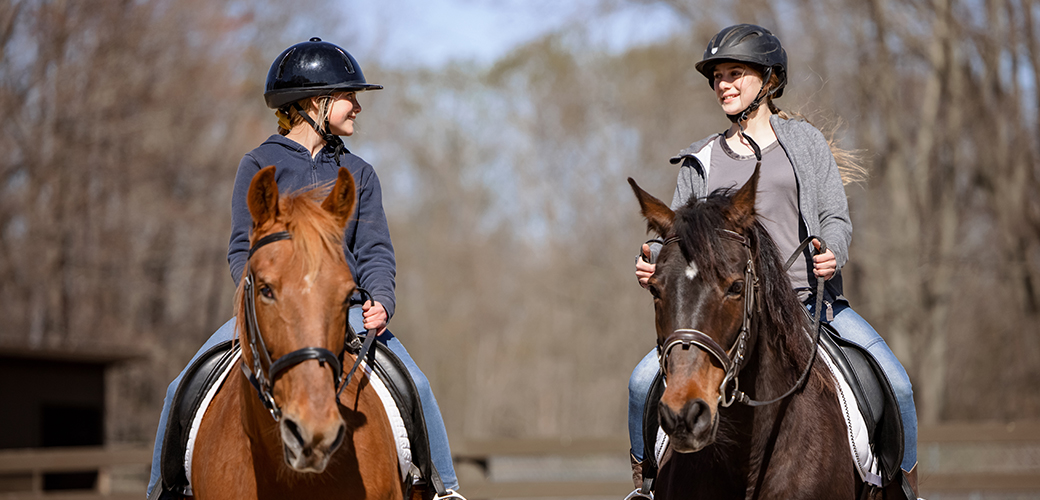

If you’re beginning your journey into the world of horses, it might seem like the people around you are speaking a different language. In a sense they are! There are many unique terms used to describe horses and the lifestyle that comes with loving them. Have no fear, with this quick guide, you can instantly become an equine insider.
As a reminder, equine adoption is a friendly entry point into the horse world. If you’ve dreamed of getting involved with horses, we encourage you to pick up the trot and meet our network of ASPCA Right Horse Adoption Partners.
Common horse movement and equipment descriptors:
Walk – The walk is a slow, four beat gait.
Trot – The trot is a faster, two beat gait where the legs move in diagonal pairs. The front left leg and hind right leg move forward in unison alternating with the front right and left hind leg. In many Western riding disciplines, a slower trot is desirable. It has the same motion as the trot but is frequently called a jog.
Canter – The canter is three beat gait that is typically faster than the walk and trot. In the Western disciplines, this gait is often called a lope and may or may not be slower than what you’d typically see in the English disciplines.
Lead – In the canter, one of the front legs will lead off the stride, striking the ground at the farthest forward position of the stride. When the right foreleg strikes farthest forward, it’s called being “on the right lead,” and vice versa with the left foreleg. To keep the horse balanced, the inside leg (the leg closest to the inside of the arena or track) is typically considered the “correct lead.”
Lead change – When a horse changes their stride to be leading with the opposite front leg.
Gallop – A fast, four beat gait.
Tack – An all-encompassing term to describe the gear and equipment used when riding or driving a horse or pony.
Bridle – A bridle is the piece of headgear worn by a horse while being ridden. Bridles vary greatly between riding styles and the horse’s individual needs. The bridle holds the bit or noseband stable so that the rider can communicate effectively with their horse.
Bit – The bit is a piece of rubber, leather or metal that is attached to the bridle and reins and allows the horse to feel and respond to the rider’s signals. Not all horses wear a bit when being ridden and there are many different styles of bit to accommodate each horse’s individual needs and preferences. A bit should not be painful for the horse, instead it should serve a similar purpose as a leash, to communicate direction and speed.
Saddle – Often, riders will use a saddle when riding. The saddle allows the rider to safely and comfortably sit astride and use their seat and legs to communicate signals to their horse. Western and English are the two main categories of saddles.
Halter – The halter is a simple head piece that’s used by handlers to safely catch and lead a horse during routine care and interactions on the ground like grooming, veterinary work and farrier care.
Now you know many of the common terms you’ll hear when you take riding lessons or start your adoption journey. Now you’re – ready to hit the ground cantering! Learn more about different horse descriptors, common coat colors and breeds you’ll encounter and become a true equine expert.
To learn more about equine adoption, visit My Right Horse. There, you can browse hundreds of adoptable horses, learn more about the adoption process and easily share your favorite horses on social media to help connect the right horse to the right person.
Source: Read Full Article



